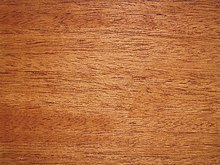Mahogany
**1. Mahogany Species:**
– The three main species are Honduran mahogany (Swietenia macrophylla), West Indian mahogany (Swietenia mahagoni), and Pacific mahogany (Swietenia humilis).
– There are debates on the classification of Pacific mahogany, with some considering it a variant of Honduran mahogany.
– Hybrids between different mahogany species are cultivated for their timber.
– Other species marketed as mahogany include Philippine mahogany from the Shorea genus, known commercially as Lauan or Meranti.
**2. Mahogany Trade and History:**
– Mahogany trade began in the 16th century, flourishing in the 17th and 18th centuries.
– The United States is the leading importer, while Peru is the largest exporter of mahogany.
– Conservation efforts led to mahogany species being listed on CITES due to concerns over illegal logging.
– The British Mahogany Trade thrived in the 18th century, with Jamaica being a significant source for British furniture makers.
– Various mahogany varieties like Cuban, Hispaniola, and Jamaican mahogany contributed to the trade.
**3. Mahogany Characteristics and Uses:**
– Mahogany is known for its straight, fine grain, reddish-brown color, and specific density ranging from 500-850kg/m.
– It is durable, resistant to decay, and favored for furniture, boats, musical instruments, and cabinetry.
– Mahogany is categorized as a tonewood for its acoustic properties, with a medium texture and straight to interlocked grain.
– The wood is relatively lightweight compared to other hardwoods, making it suitable for various applications like interior trim work and luxury items.
**4. Mahogany Conservation Efforts:**
– Organizations like Greenpeace work to protect mahogany forests and combat illegal logging.
– Sustainable forestry practices are promoted to conserve mahogany resources.
– Awareness campaigns emphasize the importance of preserving mahogany ecosystems.
– Research is ongoing to develop alternative sources and sustainable management practices for mahogany.
– Mahogany extraction from Indian reserves in Brazil raised environmental alarms, leading to conservation concerns.
**5. Mahogany Etymology and Cultural Significance:**
– The term ‘mahogany’ first appeared in John Ogilby’s America in 1671, with uncertain etymology possibly rooted in native Bahamian languages.
– Mahogany is the national tree of the Dominican Republic and Belize, featuring prominently in their cultural symbols.
– Over-harvesting and environmental concerns have led to a decrease in mahogany use despite its historical significance.
– The wood’s rich history, durability, and attractive grain patterns contribute to its cultural and economic importance.
– Mahogany has been historically associated with British-controlled West Indies and has a specific density ranging from 500-850kg/m.
Mahogany is a straight-grained, reddish-brown timber of three tropical hardwood species of the genus Swietenia, indigenous to the Americas and part of the pantropical chinaberry family, Meliaceae. Mahogany is used commercially for a wide variety of goods, due to its coloring and durable nature. It is naturally found within the Americas, but has also been imported to plantations across Asia and Oceania. The mahogany trade may have begun as early as the 16th century and flourished in the 17th and 18th centuries. In certain countries, mahogany is considered an invasive species.





Mahogany is wood from any of three tree species: Honduran or big-leaf mahogany (Swietenia macrophylla), West Indian or Cuban mahogany (Swietenia mahagoni), and Swietenia humilis. Honduran mahogany is the most widespread and the only genuine mahogany species commercially grown today. Mahogany is a valuable lumber used for paneling, furniture, boats, musical instruments, and other items. The United States is the leading importer of mahogany, while Peru is the largest exporter. Mahogany is the national tree of the Dominican Republic and Belize.
Swietenia species have been introduced in various countries outside the Americas since the 1800s, with many plantings becoming naturalized forests. All species of Swietenia are now listed by CITES and protected due to concerns over illegal logging and mismanagement. Mahogany species can crossbreed when they grow in proximity, and the hybrid between S. mahagoni and S. macrophylla is widely planted for timber.
The history of the American mahogany trade dates back to the 17th century when the wood was first noticed by Europeans during the Spanish colonization of the Americas. Mahogany became more popular in the 18th century when the British Parliament removed import duties on timber from British possessions, leading to increased exports to Europe and North America. Throughout the 18th and 19th centuries, mahogany from various regions was imported into Europe and North America, with Britain being the largest consumer.
By the late 19th century, African mahogany began to dominate the market, and by the early 20th century, the supply of American mahogany became scarcer. In response to concerns about the sustainability of mahogany, several species have been placed on CITES Appendices to regulate the trade.
Mahogany is known for its straight, fine grain and durability, making it a popular choice for fine furniture, boat construction, and musical instruments. However, the over-harvesting of mahogany and environmental concerns have led to a decrease in its use.
